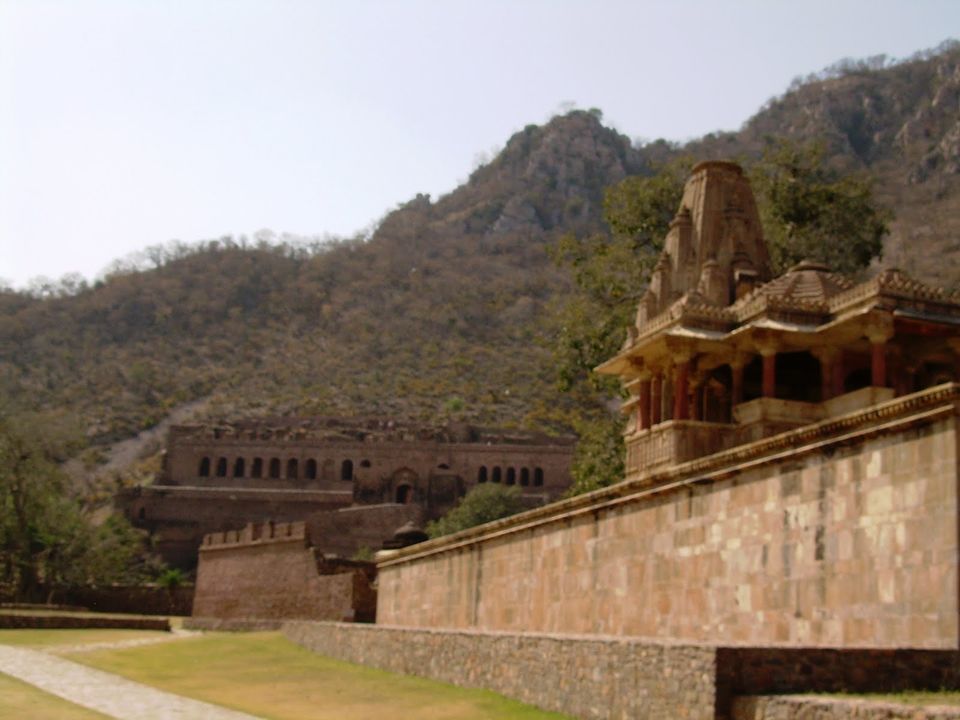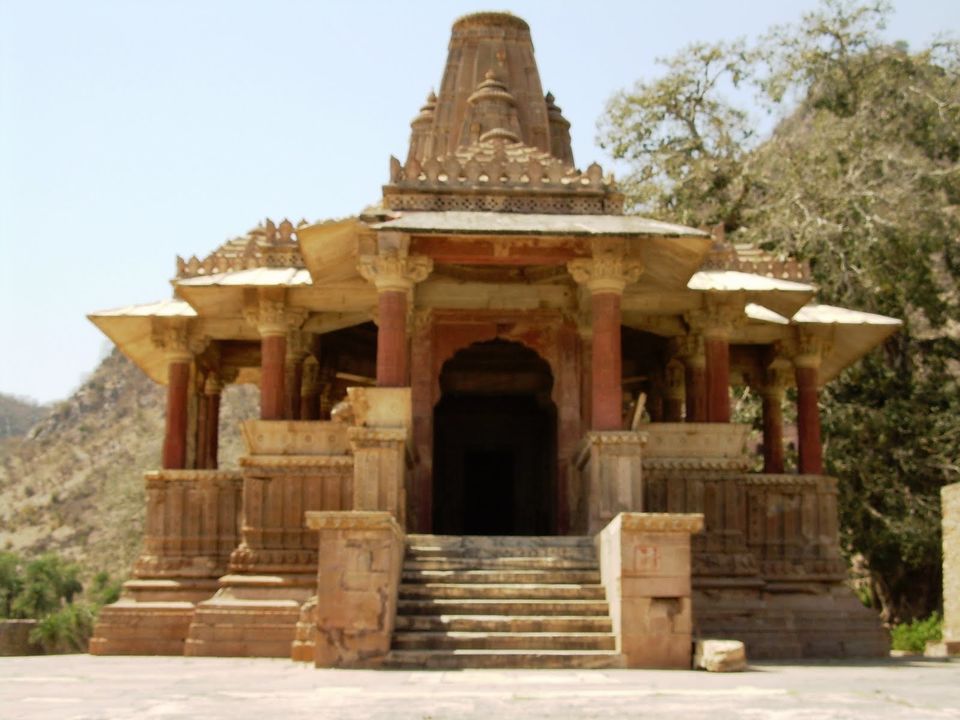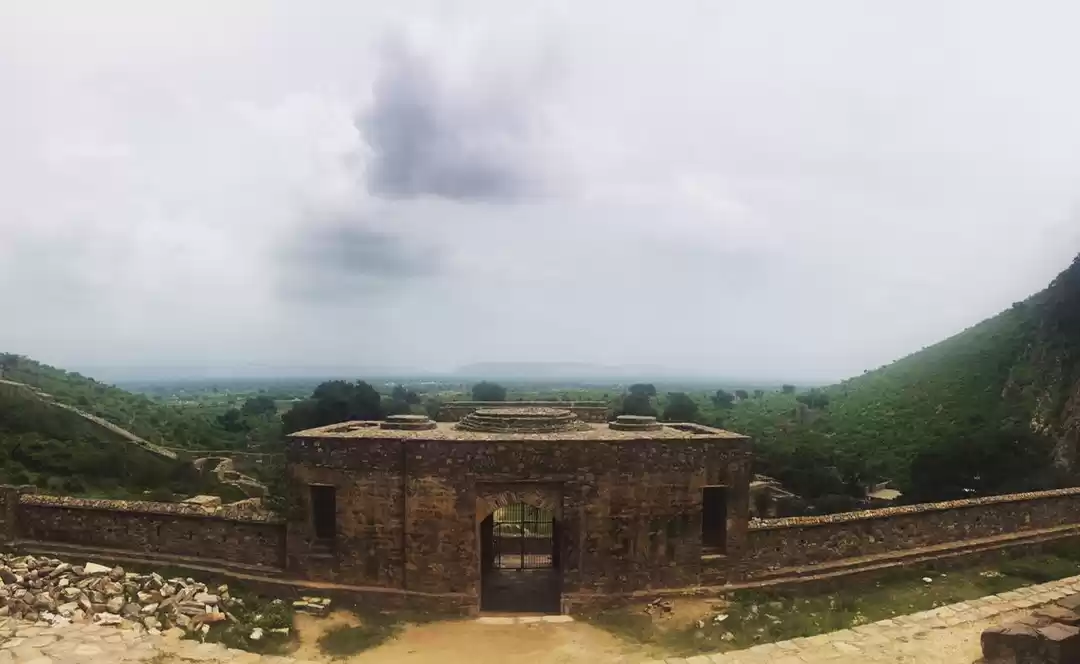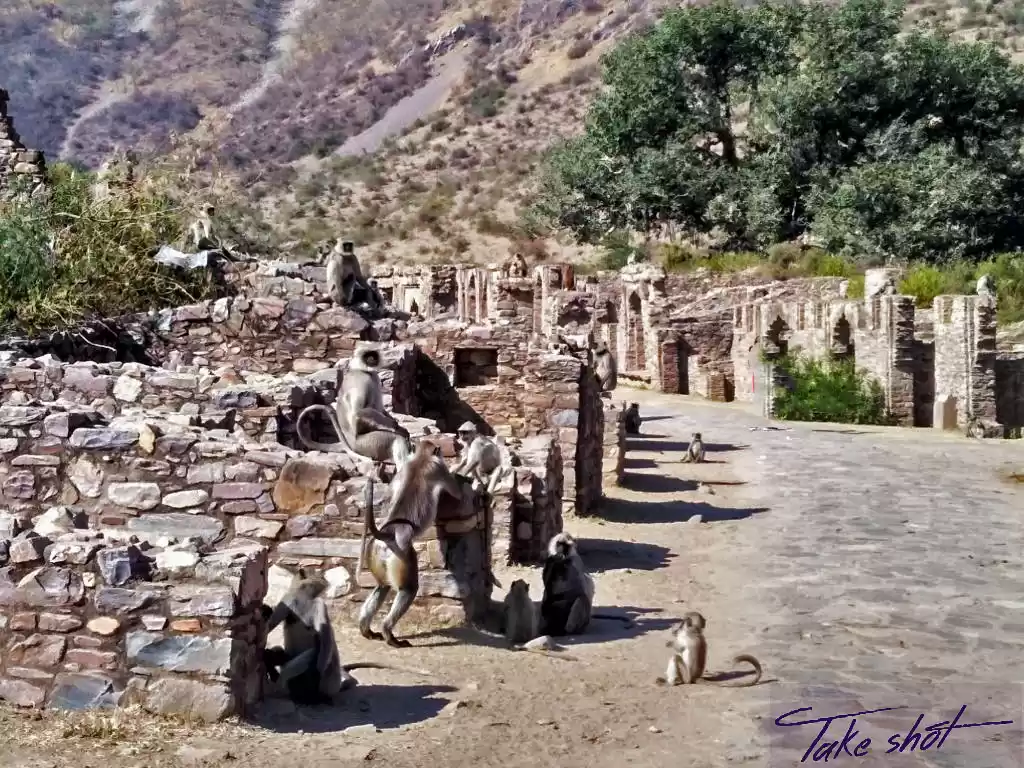




‘God, I am no Harry Potter! Better get out of here in time!’ I murmur out aloud. Loud enough for the pigeon sitting on the far end of the stony arch to flap its wings and acknowledge this fact with a wild flutter. ‘Damn, even he knows this!’ I murmur again, and hurry out of the broad archway taking frantic steps, suddenly realising that everything around me is not so bright anymore.
The sun is now hiding behind the palace walls, readying to sink down the grounds. Soon it would be dark, and there are warnings that this place is forbidden territory after sunset. I am standing amidst the colossal ruins of Bhangarh, the deserted ghost town at the edge of Sariska Tiger Sanctuary in Rajasthan. Since I am no Harry Potter, so naturally I have no magic wand to ward off ghosts of the dead, no Hermione to come up with instant life saving spells and of course no Ron to give moral support when faced with the forces of the evil. Standing here, all alone on the grounds acknowledged as one of the most haunted around the country, I am more than a little nervous. The adventures of Harry Potter seem distant and unreal now. Only thing real is the dreadful remnant of a once bustling town, now haunted by its past.
A few hours ago, when the sun was moving high in the sky, I had stood here, taking in the panoramic view of the ruins, marvelling at the gothic expanse of stone structures around me. The crumbling walls and pavilions standing against the rocky Aravalli hills seemed to tell tales about the town’s tryst with all things living. The elaborate ruins spoke of the grandeur of the town – temples dedicated to various gods and goddesses, a main road flanked by bazaars on both the sides, leading to the havelis, and then further up to the grand palace, at the far end of the town complex. However, what stands now are just crumbling remains of a once beautifully laid out town.
Beautifully laid out it was. There’s ample proof of it all around the vast expanse of Bhangarh. This ancient town was founded in the later half of the 16th century by Raja Bhagwant Das, as the residence of his second son Madho Singh. Madho Singh was the younger brother of Man Singh I of Amber, who was a general at Emperor Akbar’s court and was also one of the navratnas, the nine gems of the royal court. Coming back to the Bhangarh, protected by three successive fortifications, the town grounds boasted of a grand palace, elaborate living quarters and intricately carved temples, of which the Gopinath temple and Someshwar temple are fine examples of the Nagara style of architecture prevalent in those times. There were grand havelis, colourful and well planned bazaars, and yes, a grand palace for the prostitutes too, built for the courtesans who entertained the rulers. But all that is gone. Among the many structures, only the temples have somewhat withstood the assault of time and nature, though almost all of them stand idol less now.
So what wrecked havoc on this once alive town? What caused the exodus of all things bright and living? How the town came to be destroyed and abandoned? What caused the demise of this once flourishing town of 10,000 homes? There are questions and then there are some more.
The local lore abounds in legends and spooky stories associated with this ruined town complex, stories relating to how the town came to be destroyed. A popular legend puts the blame of the catastrophe the town incurred on a deadly tantric battle fought between the beautiful Princess Ratnavati, the ruler of Bhangarh and the wicked sorcerer Singhia Sevra. Besotted by the princess’ beauty, the sorcerer tried to cast a magic spell to win her over. But his plans were foiled by the princess who herself was adept in the magic arts. In the final battle of wizardry wits, evil Singhia was fatally wounded, and dying, cursed the town and its people with eternal doom. As a result of the curse, the town was destroyed and abandoned overnight.
Another legend tells about the doomsday prophecy of an ascetic, Guru Balunath. Guru Balunath, who lived in this region, had sanctioned the settlement of Bhangarh, but had forewarned the rulers of dire consequences if his secret abode was infringed upon. The rulers were to keep in reign their construction plans, so that the bigger expansions did not overshadow Guru Balunath’s retreat. However, unmindful of such forebodings, one of the descendants of the ruling dynasty expanded his palace to such heights that its shadows reached Guru Balunath’s secret retreat. So as prophesied the town was wiped out overnight, never to be inhabited again.
Whatever the reason behind the destruction, the town never recovered from it. Even today, no one ventures around its ruins in the dark, and the many stories of the dead haunting the fort complex and holding court under the giant banyan tree keep the villagers away. They say they don’t want to be here after the sun goes down. So much so, that the tales of paranormal activities, keep many a faint hearted away during the day too. Such was the intensity of the fury unleashed on the town that fear still looms large in the minds of the locals.
And now, as the sun bids farewell to this part of the world, and darkness closes in, Archaeological Survey of India’s warning flashes before my eyes: ‘Entering the borders of Bhangarh before sunrise and after sunset is strictly prohibited.’ There are other flashes too – images of a bustling town devastated by a raging tempest. Beautiful maiden adept at black magic, lustful wizard’s evil curse, or over ambitious expansion plans, whatever the cause, Bhangarh today is a town lost in time, a town that now stands abandoned – desolate and forsaken, except for its monkeys and pigeons. And of course its resident ghosts.
This post was first published on From My Window Seat.
























